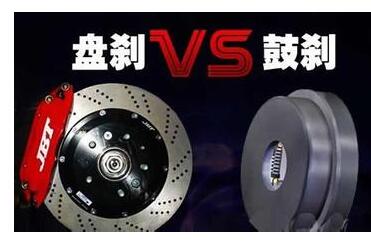Introduction Automotive Braking System
The driving of the car is based on the rotation of the tires. When we need to stop, we must rely on the car's braking system to reduce the speed of the car until the car is stationary. Braking devices use friction pads to make friction with the hub or disc, and convert the kinetic energy of the car into heat to achieve deceleration. Commonly we have drum brakes and disc brakes. Here's a brief description of the two brake methods: Drum brakes: Drum brakes have been used in automobiles for nearly 100 years. They rely on hydraulic devices to push brake pads inside the brake drum, causing the brake pads and brake drums to rub against each other, producing a braking effect. Drum brakes have high reliability and powerful braking force. Therefore, drum brakes are still deployed on many models and are used in the rear wheels of automobiles. The function of the drum brake is: After the brake pedal is pressed, the brake pump pushes the brake oil in the oil circuit to generate pressure, and the pressure is transmitted to the brake cylinder piston on the wheel. The brake cylinder piston then pushes the brake pad to The external brake pads and brake drums are rubbed to produce a braking effect. To put it simply, a drum brake is a brake device that uses a “lever principle†to push a brake pad so that the brake pad comes into contact with the inner surface of the drum and friction occurs, which reduces the speed of rotation of the wheel. Drum brakes are simple to install, have automatic brake effect, low manufacturing cost and other advantages. However, the drum brake system reacts slowly, and the force at the time of braking is not easily controlled and the high frequency brake action cannot be performed. Disc brakes: In order to improve the stability of the brakes at high speeds, disc brakes have become the mainstream brake system. The brake discs of the disc brakes are exposed to the air, so they have good heat dissipation performance, so that the frequency of the brakes is increased and the braking effect is not reduced. Disc brakes respond quickly, so vehicles with disc brakes will have systems such as abs and vsc installed. When the brake pedal is depressed, the piston of the brake pump is pushed, the pressure in the oil circuit is generated, and the pressure is transmitted to the brake cylinder. The brake cylinder pump pushes the brake disc to clamp the brake disc, resulting in friction reducing the vehicle speed. The advantages of disc brakes are good heat dissipation, rapid response to high frequency braking action, no self-tightening forklift uniformity, and good drainage performance. However, the disc brake's force is not as good as the drum brake, and the brake pads wear faster. Today's general vehicles, such as construction vehicles, are all in a hybrid form with front-wheel disc brakes and rear-wheel drum brakes. The above is a brief introduction to the automotive brake system.
Gauge Wheel Bearings: Wheel Bearing,Wheel Bearing Kit,Gauge Wheel Bearing,Wheel Bearings Ningbo Borine Machinery Co.,Ltd. , http://www.borine-agroparts.com
Gauge wheel bearings are also a series of Agricultural Bearings,
Borine' Gauge wheel bearings are made with Triple lip seals to protect
from the corrosive environments. Fit in kinds of Colsing Wheel Assy,
Widely used on John Deere, case-IH, Great Plains, Kinze Planters.
Borine's Gauge Wheel Bearings are basis on good quality and competitive
prices.